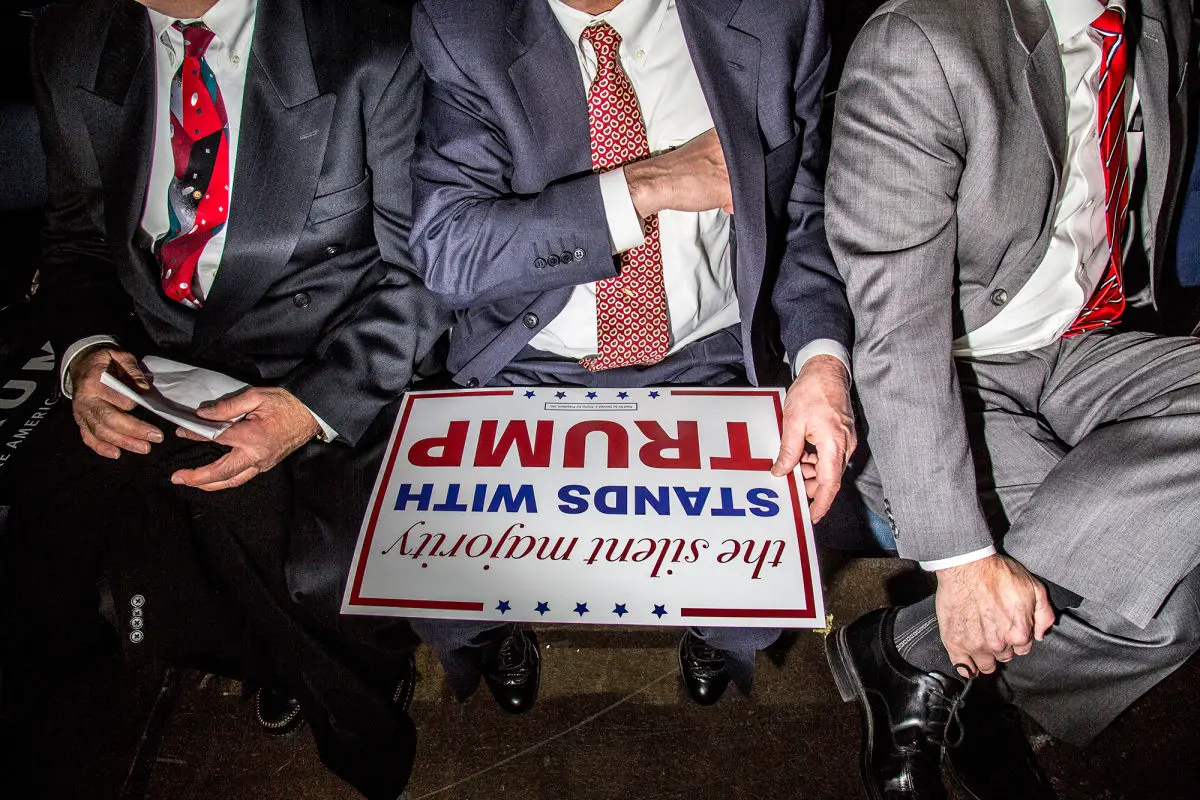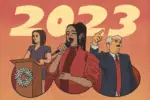Following the election of Donald Trump, the rise of a white nationalist and supremacist fringe movement called the alt-right has reared its ugly head in the world of politics to celebrate Trump’s recent victory.
The movement has gained attention since “The Atlantic” released a video on its Facebook of a white nationalist convention, demonstrating attendees hailing Trump in a Nazi-like salute. The spokesperson and leader of the convention, Richard B. Spencer, heads the National Policy Institute, which is essentially a lobbying platform for white supremacist ideals.
http://https://www.youtube.com/watch?v=1o6-bi3jlxk
“Hail Trump, hail our people, hail victory!” Spencer proclaimed in the documentary video, as the audience erupted in cheers and applause.
To many, this frightening movement has seemingly appeared out of thin air. The alt-right movement, however, has been circulating the abysses of the internet for many months preceding the election and is not fully reflected in the Nazi-like video.
The alt-right is much more intellectually complicated than many perceive it to be.
It has hidden itself within social media bubbles, ultra-conservative news sites, and online chat forums like Reddit and 4chan—ultimately disseminating itself to the masses through an extensive digital platform.
Nevertheless, the term alt-right is a misleading categorization of this group’s ideologies and party agenda. “The Associated Press” recently released a new style guide to reference the alt-right, stating that journalists must use the term with proper clarification and definition in order to emphasize the racist and fascist principles of the movement that is disguised as “an offshoot of conservatism.”
The self-proclaimed alt-right movement attempts to disguise its ideologies within a seemingly innocuous namesake. “Alt-right” stands for alternative right; it suggests that it upholds a platform that is an “alternative” to the principles of the establishment elites who lead the pre-Trump Republican party.
It’s not so easy to label the alt-right, since this is a group that embodies modern societal ideals with a distinctly traditional twist, basing off the writings of race scientists and paleoconservative philosophers.
However, it would be an oversimplification to clump the movement together and claim them all to be Neo-Nazis or xenophobes, although many of their principles reveal a negative perception of women, religious and ethnic groups.
To truly understand the alt-right movement and its complexity, one must first acknowledge the modern political spectrum.
Politics Is Not “Democrat vs. Republican” or “Left vs. Right.”

In fact, it takes on a much more nuanced form, ranging from social issues to economic stances. On a political spectrum, American politics attempts to portray itself as moderate—in order to appeal to as many citizens as possible, regardless of party affiliation.
Within recent years, the modern Democratic party has been catering toward social reform more proactively than the Republican party, which remains tied to conservative Christian values. Frighteningly enough, the leaders of the alt-right are smart enough to recognize this; they want to bring forth an “alternative” group that opposes the Democrats’ social platform while distinguishing themselves from the traditional elitist conservatives who they believe do not represent their values.
Therefore, the movement’s “alternative” mentality is dangerously persuasive, especially to the white working class who feel ignored and dissatisfied with government leaders’ attempt to improve their lifestyle and economy. The alt-right is a populist movement, meaning that it seeks to represent the interests of ordinary, working class individuals.
However, this self-proclaimed populist movement is laced with fascist, racist ideologies that seek to undermine liberal culture, such as political correctness, identity politics (politics catering to minorities and other marginalized groups in society) and feminism.
The movement is currently in its earliest stages, and it should not be generalized into historic political groups, like the Nazis, by the press. Although the group evidently reflects ideals reminiscent of Nazism and race supremacy, journalists must show the public how the alt-right embodies these values, instead of merely casting them as Neo-Nazis.
There is no simple way to fully explain the platform of the alt-right, since these “alt-righters” range from neoreactionaries (those who reject democracy and advocate for a monarchy) to white, young men opposing liberal culture. A member of the alt-right group could be a Nazi-like white supremacist or could simply be a libertarian who opposes the establishment. All of these mixed identities make it difficult for one to categorize the movement, although the majority of the group holds “racist, religiously biased, anti-immigrant views.”
The press already has a history of oversimplifying many political issues, and to overgeneralize the alt-right would result in falling right into the group’s intelligent trap. It would strengthen the group’s statement that the press is “liberal propaganda” by labeling oppositional liberal ideas as dangerous.
Essentially, the alt-right claims that they are more than the what the mainstream press displays them to be: anti-Semites, white supremacists, neo-Nazis. In a Breitbart article written by one of the prominent figures of the movement, Milo Yiannopoulos, he states that the individuals within the alt-right are young intellectuals, which separate them from “old-school racist skinheads” and hypermasculine rednecks who disregard feminism.
Yiannopoulos attests to eloquent arguments on the “loss of manliness” within industrialized societies to fight “left-wing feminism” and the lack of identity with “self-censorship” that ushered in political correctness.
These arguments, although intellectually and articulately phrased, contain ideologies that undermine the values of modern America and its call for equality.
The alt-right basically seeks to advocate for white, young men, Yiannopoulos writes, who feel threatened by looming progressive movements, such as third wave feminism and Black Lives Matter. They see that the “pressure to self-censor must be overwhelming for straight white men,” criticizing society’s “anti-Europeanism” mindset as a socially acceptable form of reverse racism.
One thing is for certain: The alt-right movement has thrived upon the election of Donald Trump and the rise of populist politics in American culture.
Trump’s incendiary statements towards immigrants, women and individuals of different religions became the breeding ground for the alt-right ideas to gain support and a following.
Although the “alt-righters” proudly call themselves an alternative to establishment politics, distinguishing them from the liberal Democratic and traditional Republican party, the public must recognize the inherent racism and cultural regressiveness of these ideologies.
It is not an “alternative” opinion to be against solving the wage gap or working to protect the rights of marginalized groups. It is frighteningly regressive to ignore the consequences of white privilege and supremacy toward individuals of color throughout the nation’s history. It is a backwards way of thinking that disregards the years of social progress the world has worked toward, and a delusional final stand against the progressive melting pot America is becoming in its changing demographics.

















